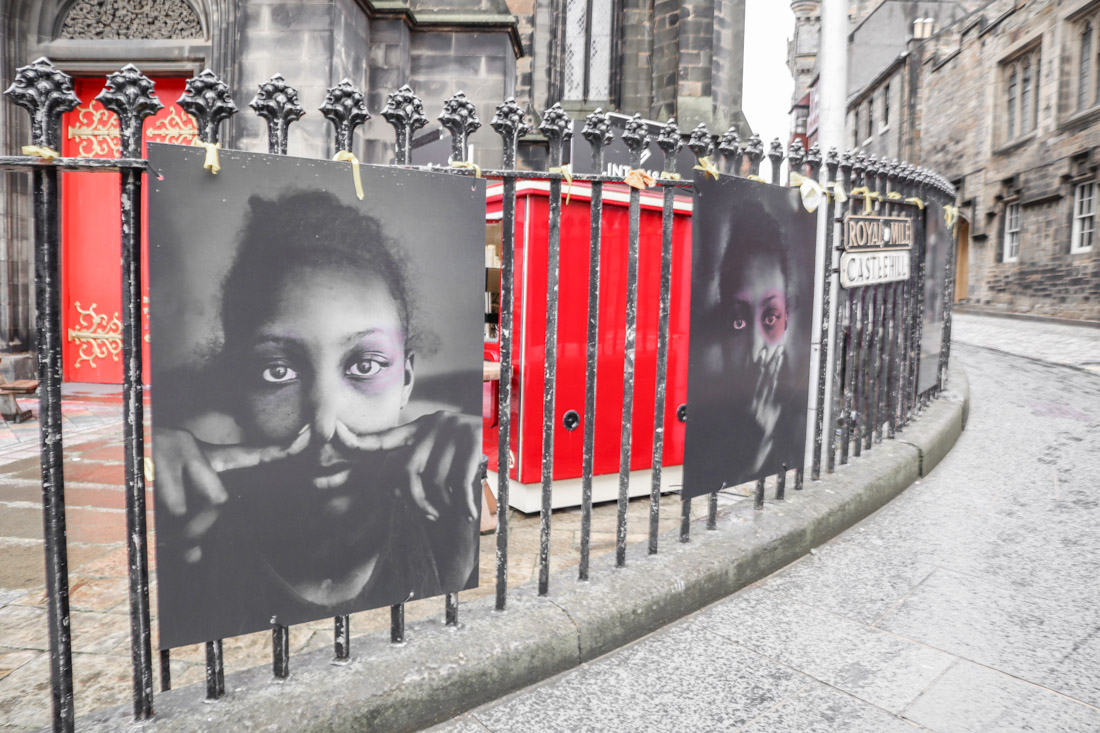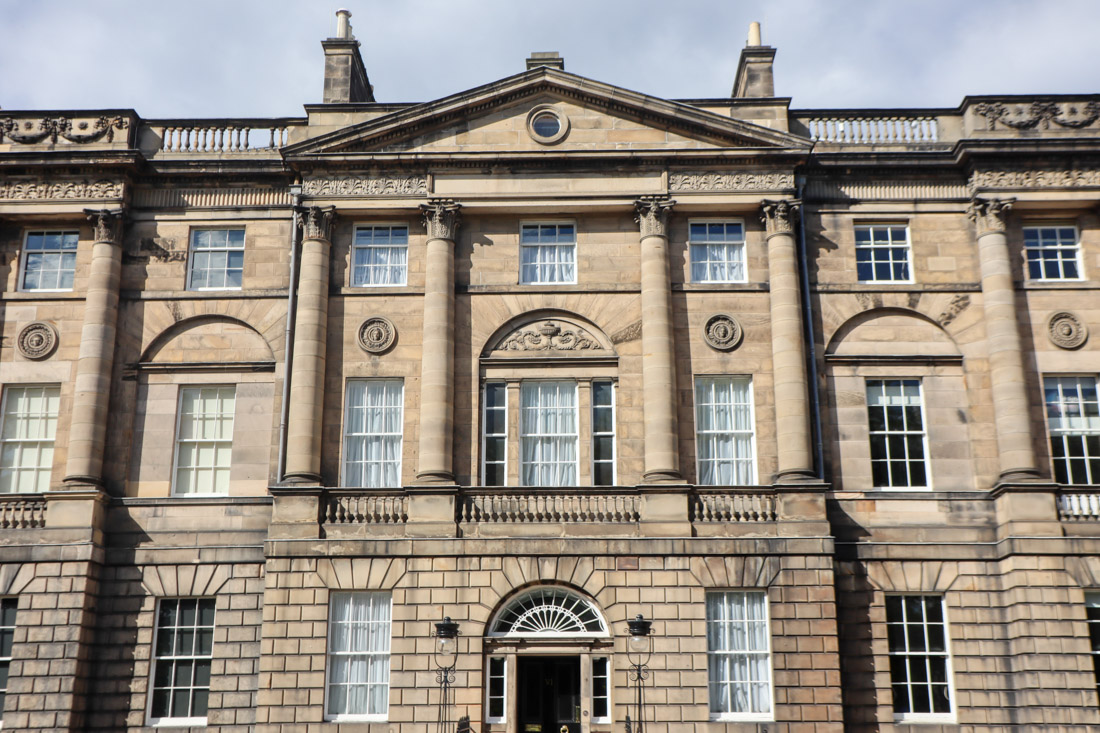This article has links to products and services we love, which we may make commission from.
Edinburgh. A city known for its split personality. The tight cobbled streets and historic buildings of the Old Town versus its spacious and wide Georgian design of the New Town.
While many locals are well-versed in stories that surround the Old Town, and visitors will leave having learned the Royal Mile rumors, very few will find out about Edinburgh’s New Town narrative, unless they make a real effort to do so.
However, now, thanks to the Black History Walks in Edinburgh tour, it is easier to see a more complete history of Scotland’s capital and its deep connections to Africa, Asia, and the Caribbean.
It’s a more complete understanding that schools, plaques, and visitor attractions have failed to feature.
About the Black History Walking Tour in Edinburgh
Led by Lisa Williams, Director of the Edinburgh Caribbean Association and Honorary Fellow in the School of History, Classics and Archaeology at the University of Edinburgh, the Black History Walking Tour of Edinburgh highlights the good, the bad, and the ugly for Scotland over the centuries.
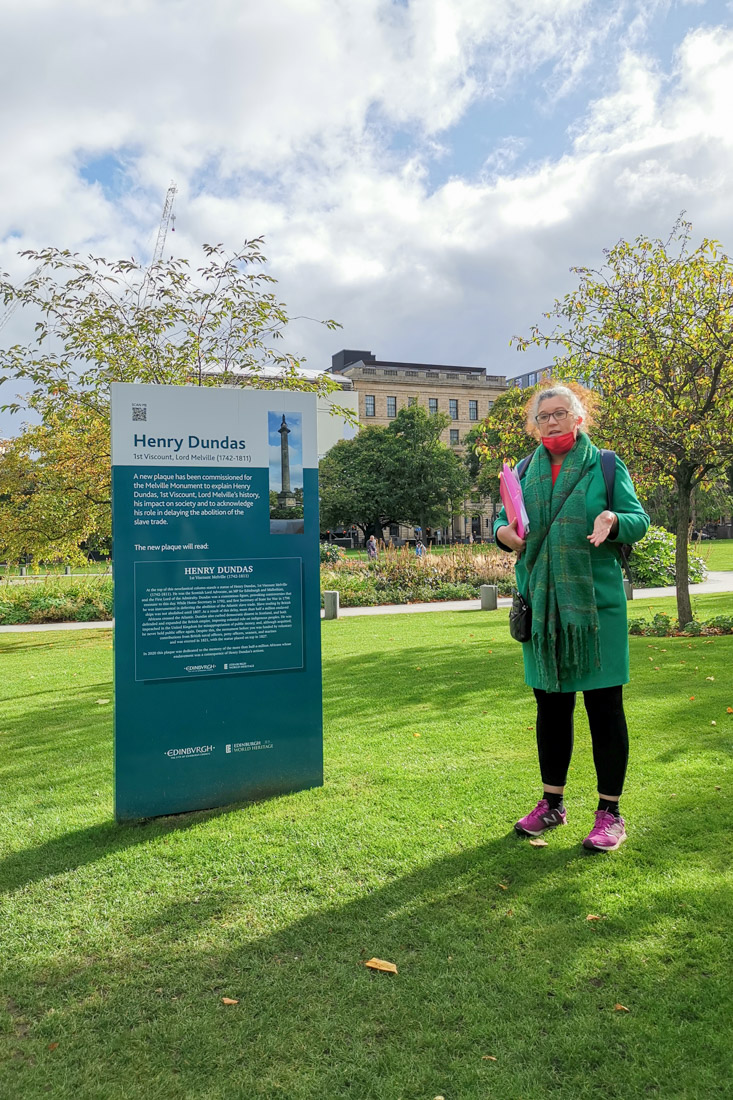
Williams does not shy away from the tough conversations and her tour offers insights into prominent Black figures in history as well as Scottish support for enslavement and for ongoing racist policies.
Meeting on St Andrew Square, you’ll quickly learn just how passionate and deeply knowledgeable Williams is on all things related to Scotland, the slave trade, and Black people in the city of Edinburgh.
As an academic with British-Grenadian heritage, she has invested her professional and personal interests into uncovering truths and educating the public.
Her tour encompasses centuries of Scots’ involvement in Black history. From the start of the Transatlantic slave trade in the 1630s until today, Williams shares insights into individual people, places, and legacies that impact Scotland as we know it.
If you’re visiting Edinburgh or live in town, we highly encourage you to join a tour with Lisa Williams to hear these stories and try to better understand a more complete history of this city and country.

Scotland and Slavery: A Dark Past
Around 1760, construction began on Edinburgh’s stunning New Town, a perfectly-planned section of the Scottish capital that oozed wealth.
When New Town was completed around 1800, it was the most expensive real estate in all of Europe and was considered to be the biggest planned development in the world.
Many of these New Town addresses are on the compensation list for former enslavers meaning that the owners were involved in plantations and received money when it was eventually stopped.
By 1763 on the Caribbean island of Antigua, 62% of slave plantations were owned by Scots. Scots had gotten involved in the Transatlantic slave trade more than a century earlier.
In the 1630s, the ship-building and trade had begun, ramping up in the 1670s and becoming a massively important industry after the Acts of Union in 1707 joined England and Scotland under the same crown — and therefore the same protections and trade opportunities.
The history of Scotland and the Transatlantic slave trade cannot be separated.
Much of Scotland’s wealth and much of the current architecture, the grand estates, and the celebrated historical figures can be connected to the kidnapping, shackling, selling, and lifetime enslavement of African people.
Whether you know very little about this connection or you feel quite well-educated on the topic already, taking the Black History Walking Tour in Edinburgh with Lisa Williams will surely enlighten you.
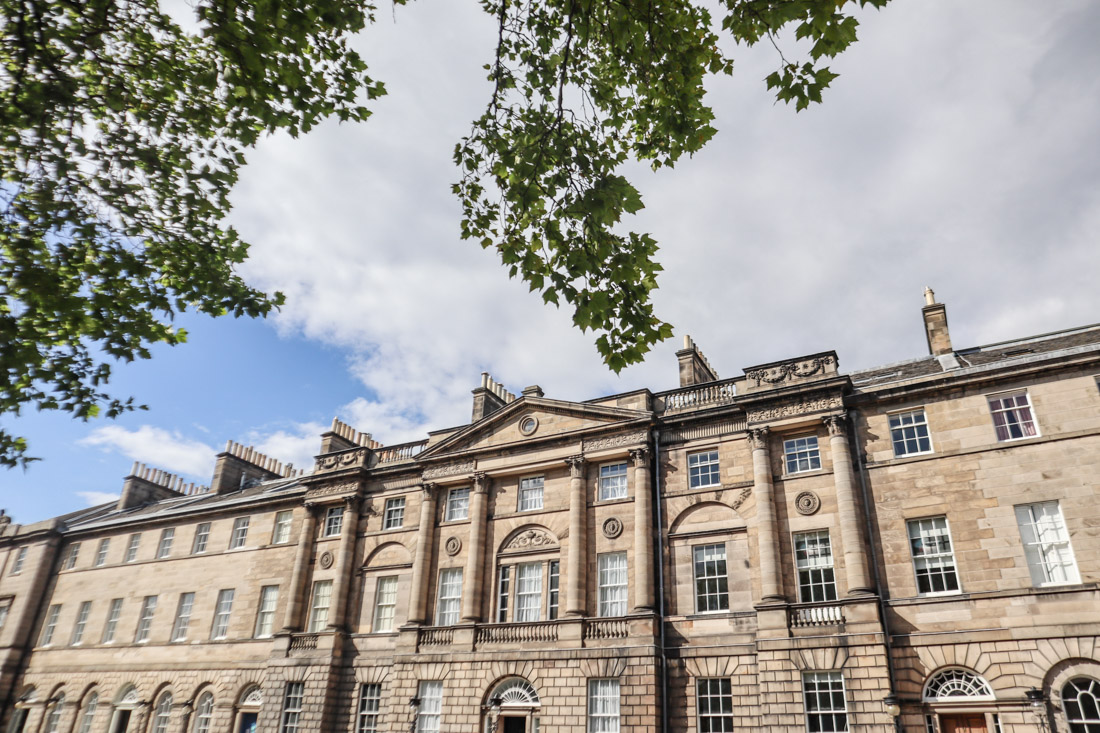
Lessons Learned During the Tour
Scots Involved in the Enslavement of People
Many recognizable names in Scottish history have connections to the Transatlantic slave trade, the enslavement of Black people, and/or to the legacy of enslaving people and the corresponding financial benefit.
A great many others are, sadly, known for their racist views, writings, proclamations, or efforts to block the legal rights of Black people.
Some of these names include…
Sir John Gladstone: The Leith merchant owned more slaves than any other Briton and therefore received the highest payout of all British plantation owners after the emancipation of enslaved people. That compensation scheme was, in no small part, due to his son’s advocacy as a Member of Parliament.
You’ll recognize the name Gladstone for the four-time Prime Minister, William Gladstone, the same son who helped “compensate” slaveholders after emancipation. There’s also a plaque in Leith marking the birthplace of Sir John Gladstone.
Henry Dundas, 1st Viscount Melville: Dundas was highly influential in a fifteen year delay in the abolition of the slave trade.
Using his powerful position to encourage ‘gradual’ rather than ‘immediate’ abolition, he gained the support of slave owners in the years before eventual abolition in 1807.
In order to secure islands like Grenada for the British, and fight against the Haitian Revolution that had seen the enslaved achieve their own emancipation, during the 1790s he organised the largest military mission to have ever left Britain.
You’ll know him from the enormous monument honoring his life and legacy in the middle of St Andrew Square, where the tour begins.
His distant cousin Lawrence, a plantation owner, built Dundas House, which is now the Royal Bank of Scotland building on St Andrew Square.

David Hume: In his essay ‘Of National Characters’, the famed philosopher wrote a footnote about inferiority and race. His contemporaries challenged him on this idea, but he didn’t back down.
You’ll know him from his statue on the Royal Mile with the toe that’s been rubbed for good luck.
In addition to those famous names, you’ll also recognize many prominent buildings that exist because of the enslavement of people and their forced, unpaid labor.
Throughout the Black History Walking tour in New Town, Williams points out various buildings or mentions others on adjacent streets…all of which were connected to and funded by slavery.
One of the most prominent buildings on that list?
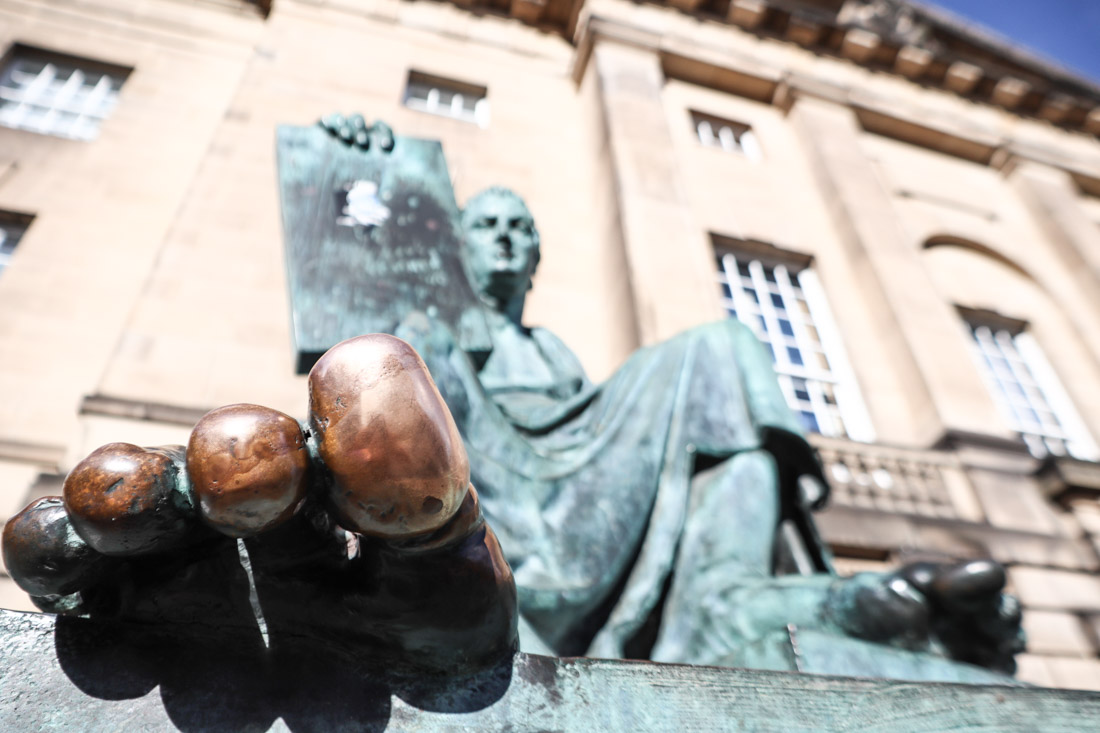
Bute House, the official residence of the First Minister of Scotland on Charlotte Square, was built with money from Jamaican slave plantations. It was part of James Craig’s First New Town plan created in the late 18th century.

Black People Making History in Scotland
Williams isn’t just leading this walking tour to highlight the legacy of evil throughout Edinburgh. The tour is also very focused on the significant people and achievements in Black history in Scotland.
Including the following historical figures…
Ignatius Sancho: The first person of African descent to vote in a British election.
Thomas Jenkins: The first Black school teacher in Scotland.
Malvina (Mally) Wells: Known as the only formerly-enslaved person with a named gravestone in central Edinburgh, Mally was an extraordinary woman.
She was enslaved on the Caribbean island of Carriacou, brought to Scotland, and lived as both a servant and independently for 70 years in Edinburgh.
She even visited her family back in Carriacou, a rare feat for the time. When she died, she left £68,000, some of which went to her sister and her children.
Lisa Williams’s research into Mally’s interesting life is ongoing, so we’ll surely learn more details about her soon!
Joseph Knight: In 1778, a famous court case was settled. John Wedderburn had brought Joseph Knight to Scotland from Jamaica, where he’d been enslaved. Once in Scotland, Joseph married a white Scottish woman and wanted to be able to provide for his family, which led to a legislative quandary.
Knight fought against his perpetual servitude on the basis of slavery being illegal in Scotland…and he won.
John Edmonstone: A formerly-enslaved Black man from Guyana, Edmonstone taught taxidermy classes at Edinburgh University.
It was under the direct tutelage of Edmonstone that Charles Darwin learned the skill that enabled him to preserve species he encountered while on the HMS Beagle, which led to his theory of evolution.
Frederick Douglass: While not a Scot, Douglass came to Scotland twice to speak on behalf of emancipation in America. His fame attracted more than 2,000 people into the Assembly Rooms for a speech in 1846.
Looking for more Black historical figures in the UK? Williams recommended the book 100 Great Black Britons, just released in September 2020.
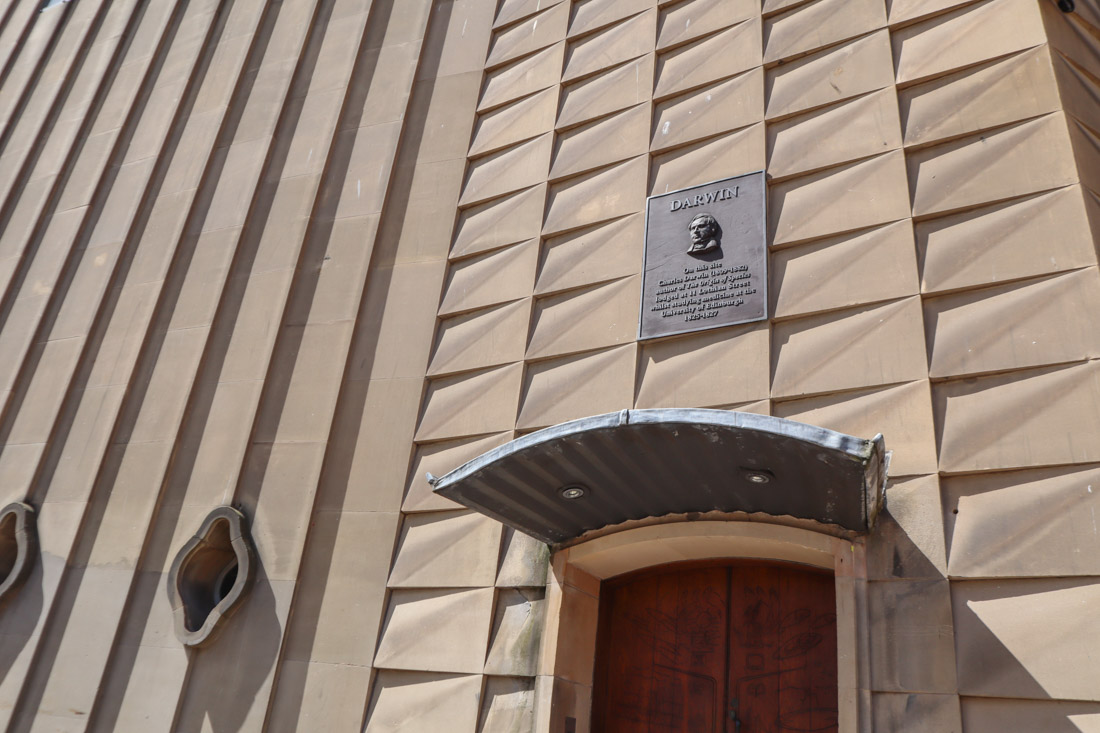
Allies in Scotland Who Fought for Black People
Scotland today is known for its welcoming people and progressive society. This country, mostly, welcomes refugees and embraces cultural differences. Edinburgh itself is diverse for its small size.
While there are a great many Scots who were involved in the enslavement of people and many more who financially benefited from that abhorrent system, there were also so many who fiercely fought for human rights.
Just a couple of those names you’ll hear on the walking tour include…
Henry Brougham: A radical Whig MP from Edinburgh, he vociferously fought against the slave trade and chattel slavery.
Eliza Wigham: A Quaker and active member of the Edinburgh Ladies Emancipation Society (ELES), she dedicated her life to the abolitionist and suffrage movements.
The group encouraged women across Scotland to sew and send outfits to aid those fleeing slavery under the guidance of Harriet Tubman, who repeatedly undertook perilous journeys to lead enslaved people to freedom in the US.
Eliza Wigham also campaigned with Frederick Douglass against the Free Church to send back the £3,000 sent from Scots in America. The two even carved into Salisbury Crags “Send back the money!”
Williams shares countless other stories during her tour, highlighting those who fought for human rights as well as those who worked tirelessly to maintain power and control over other human beings.
We haven’t even touched on her insights into Black rights in the 1900s and today… but there were plenty of lessons she shared for that period, too.
Whatever you think you know about Black history in Scotland, Lisa Willams will undoubtedly teach you so much more.

Booking Your Tour
To book a Black History Walking Tour of Edinburgh with Lisa Williams, visit her Eventbrite page during the spring through to autumn months.
You can also follow Lisa on Instagram and Twitter ECA (@edincarib) for additional insights and lessons.
And you can also follow on Facebook for articles and more details on upcoming tour availability.
Can’t join the tour but still want to learn more? Read Williams’ article for Historic Environment Scotland and her article for the National Galleries Scotland.
In addition, look out for the Black Lives Matter Mural Trail throughout the city.
Special thanks to Lisa Williams for helping us create this guide.
